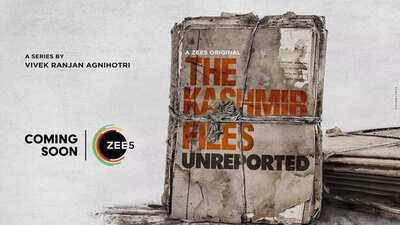History Repeats Itself: The 2025 Pahalgam Attack and the Unfinished Story of 1990
 April 22, 2025: Pahalgam Attack
April 22, 2025: Pahalgam Attack
On April 22, 2025, a tragic incident unfolded in the Baisaran meadow near Pahalgam, located in the Anantnag district of Jammu and Kashmir. Around 14:50, four to six armed militants emerged from the surrounding pine forest and opened fire on a group of tourists and local officials. The attack resulted in the deaths of at least 28 individuals, including tourists and local officials.
The militant group The Resistance Front (TRF) claimed responsibility for the attack. TRF is believed to be an offshoot of Lashkar-e-Taiba, a Pakistan-based group. Investigations are ongoing to trace the full extent of planning and execution.
Looking Back: The 1990 Exodus of Kashmiri Pandits

In January 1990, tens of thousands of Kashmiri Pandits—Hindus native to the Kashmir Valley—were forced to flee after a sudden rise in militant threats. Radical Islamic slogans were broadcast through loudspeakers from mosques, calling for a theocratic Islamic state. Pamphlets and public notices ordered Hindus to leave or face death.
The situation turned violent:
- Pandits were threatened, and many killed.
- In incidents like the massacre of Pandit Tika Lal Taploo, and later Justice Neelkanth Ganjoo, the message was clear—leave or die.
- Over 300 Pandits were estimated to have been killed in targeted attacks between 1989–1991.
- Around 70,000 families, mostly Pandits, fled their homes overnight, carrying only what they could manage. Most settled in refugee camps in Jammu, Delhi, and other parts of India.
The government at the time failed to provide immediate or sufficient protection. Till today, very few Pandits have returned to live permanently in the Valley, and most temples and homes they left behind lie in ruins or have been taken over.
 Over the years, smaller attacks and selective killings of minorities have continued in Kashmir. Incidents like:
Over the years, smaller attacks and selective killings of minorities have continued in Kashmir. Incidents like:
- The 2021 murder of teacher Supinder Kaur and principal Deepak Chand in Srinagar.
- The 2022 attack on migrant laborers and Pandit employees under the PM's rehabilitation package.
These incidents, combined with the 2025 attack, show a consistent attempt to create fear among non-Muslim residents and tourists in Kashmir.
Suffering Faced by Displaced Kashmiri Pandits After the 1990 exodus, around 60,000–65,000 Kashmiri Pandit families were displaced from the Valley. Over 30,000 families settled in Jammu, many in refugee camps with basic tin sheds or tents. Conditions were harsh—lack of clean water, poor sanitation, and extreme heat made daily life difficult.
More than 17,000 displaced families registered in Delhi and other parts of India faced similar hardships. Families lived in one-room shelters, with limited access to schools, jobs, or healthcare. Reports showed rising cases of depression, anxiety, and PTSD among survivors, especially the elderly and youth.
Generations grew up away from their land, carrying not just the trauma of loss—but also the pain of being forgotten.
Recurring Pain and Unfinished Justice

For many from the Kashmiri Pandit community, the events of April 22 feel like a continuation of their history. Generations who lived through the 1990s are now watching similar fears return, this time through a public massacre, even if they are not directly living in Kashmir.
For the rest of India, these incidents also raise questions — about security, about the status of peace in the region, and about how much has really changed over the years.
Explore the latest trends and tips in , , , , and at
 April 22, 2025: Pahalgam Attack
April 22, 2025: Pahalgam Attack
 In January 1990, tens of thousands of Kashmiri Pandits—Hindus native to the Kashmir Valley—were forced to flee after a sudden rise in militant threats. Radical Islamic slogans were broadcast through loudspeakers from mosques, calling for a theocratic Islamic state. Pamphlets and public notices ordered Hindus to leave or face death.
In January 1990, tens of thousands of Kashmiri Pandits—Hindus native to the Kashmir Valley—were forced to flee after a sudden rise in militant threats. Radical Islamic slogans were broadcast through loudspeakers from mosques, calling for a theocratic Islamic state. Pamphlets and public notices ordered Hindus to leave or face death.
 Over the years, smaller attacks and selective killings of minorities have continued in Kashmir. Incidents like:
Over the years, smaller attacks and selective killings of minorities have continued in Kashmir. Incidents like:
 For many from the Kashmiri Pandit community, the events of April 22 feel like a continuation of their history. Generations who lived through the 1990s are now watching similar fears return, this time through a public massacre, even if they are not directly living in Kashmir.
For many from the Kashmiri Pandit community, the events of April 22 feel like a continuation of their history. Generations who lived through the 1990s are now watching similar fears return, this time through a public massacre, even if they are not directly living in Kashmir.